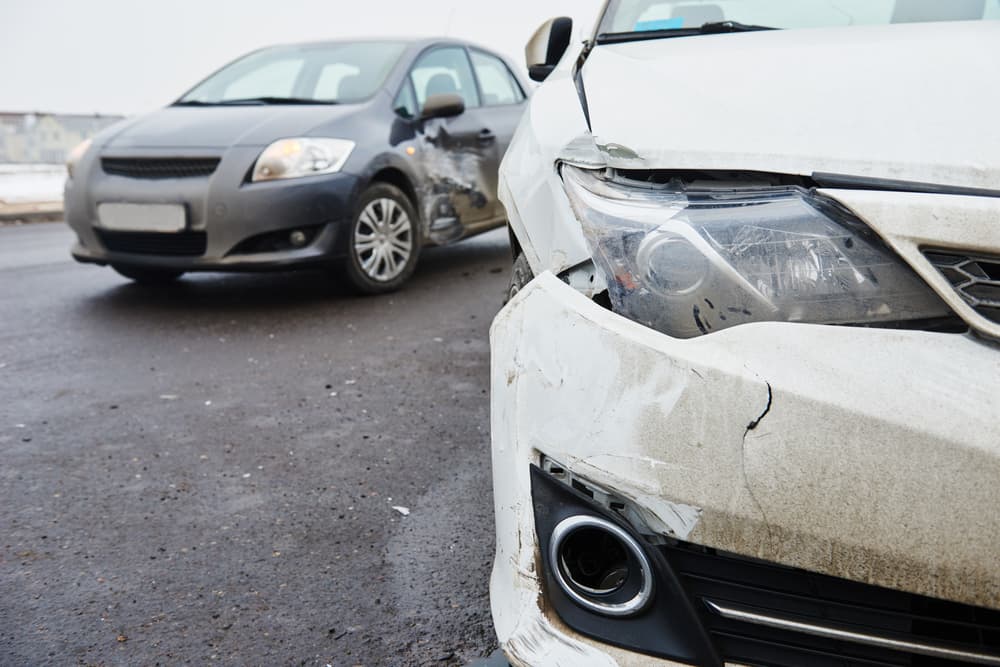Can I Sue Lyft after an Injury in an Accident?

More and more people today rely upon ridesharing companies like Lyft to get around town. Unfortunately, when Lyft drivers violate standard traffic laws, engage in distracted driving, and commit other traffic law violations, they may cause an accident, which results in serious injuries.
In some circumstances, the injured accident victim can file a claim under the rideshare driver’s insurance policy. At other times, they can file a claim under Lyft’s corporate policy or file a lawsuit directly against Lyft.
An experienced rideshare accident lawyer in your area can review your legal options with you and take the necessary steps to pursue the monetary recovery you need for your injuries.
Common Ways that Lyft Accidents Happen
Lyft ridesharing accidents often arise from various forms of driver negligence, contributing to a range of potential hazards on the road. One factor leading to many accidents is distracted driving. Lyft drivers may become preoccupied with using their smartphones to manage the app, navigate routes, or communicate with passengers. This diversion of attention from the road increases the risk of collisions, as the driver’s ability to respond promptly to changing traffic conditions becomes compromised.
Another significant contributor to Lyft accidents is driver fatigue. Long hours spent behind the wheel, especially during peak demand periods, can result in Lyft drivers experiencing fatigue or drowsiness. This diminishes their alertness, reaction times, and overall ability to safely operate the vehicle, leading to a heightened risk of accidents.
Impaired driving poses another substantial threat in Lyft ridesharing scenarios. If a Lyft driver operates a vehicle while under the influence of alcohol or drugs, their judgment and coordination may become impaired, significantly increasing the likelihood of accidents. Passengers, other motorists, and pedestrians may be at risk due to the impaired decision-making and compromised driving skills of the Lyft driver.
Speeding is another common factor contributing to Lyft ridesharing accidents. Drivers who exceed posted speed limits or drive too fast for road conditions may lose control of the vehicle, making it challenging to navigate turns or respond to unexpected events. Speed-related accidents can seriously injure passengers and others sharing the road.
Failure to obey traffic laws is a recurring issue leading to Lyft accidents. Lyft drivers may neglect to yield the right-of-way, run red lights, or engage in unsafe driving practices. Violating traffic regulations increases the likelihood of collisions, placing passengers and others in harm’s way.
Inadequate vehicle maintenance is also a factor in Lyft accidents. If a Lyft driver fails to maintain their vehicle properly, issues such as brake malfunctions or tire blowouts may occur, leading to accidents. Regular vehicle inspections and maintenance are crucial to ensuring the safe operation of Lyft vehicles.
Understanding the common ways that Lyft ridesharing accidents happen due to Lyft driver negligence highlights the importance of addressing these issues to enhance safety on the road. Implementing measures to mitigate distracted driving, combat driver fatigue, discourage impaired driving, and reinforce adherence to traffic laws can contribute to a safer ridesharing environment for Lyft passengers and other road users.
Common Locations for Lyft Accidents
Lyft rideshare accidents stemming from a driver’s negligence can occur in various locations, each presenting unique challenges and risks. One common location for these accidents is traffic intersections, where traffic convergence from different directions intensifies the potential for collisions. Negligent actions such as running red lights, failing to yield, or making improper turns at intersections often increase the risk of Lyft accidents in these areas.

Another common location for Lyft rideshare accidents is within residential neighborhoods. The combination of lower speed limits and the presence of parked cars, cyclists, and pedestrians demands heightened attention from Lyft drivers. Negligent behaviors like speeding, distracted driving, or failure to yield to pedestrians can result in accidents in these residential settings.
Busy urban areas and downtown zones also pose significant challenges for Lyft drivers. Heavy traffic, complex road networks, and the constant flow of pedestrians create an environment where driver negligence can lead to accidents. Issues such as distracted driving, failure to signal lane changes, or abrupt stops can contribute to accidents in these bustling city locations.
Parking lots are another noteworthy location for Lyft accidents. Maneuvering in crowded parking lots demands heightened awareness and caution from Lyft drivers. Negligent actions, such as speeding through parking areas, disregarding right-of-way rules, or failing to yield to pedestrians, can lead to accidents in these confined spaces.
Highways and expressways are not immune to Lyft accidents either. Speeding, reckless lane changes, and impaired driving on highways can lead to severe accidents with significant consequences for Lyft passengers and others sharing the road.
Residential driveways and drop-off locations are also susceptible to Lyft accidents. Abrupt stops or starts, failure to check for pedestrians, or negligent maneuvers in driveways can result in collisions and injuries.
Recognizing the many locations where Lyft rideshare accidents occur due to driver negligence underscores the importance of addressing safety concerns across various settings. Implementing measures to enhance driver training, discourage distracted driving, and promote adherence to traffic laws can reduce the prevalence of Lyft accidents and foster a safer rideshare environment for passengers and others on the road.
Injuries in Lyft Accidents
Individuals involved in Lyft accidents that result from a Lyft driver’s negligence may sustain a spectrum of injuries, each varying in severity and impact. One of the most common injuries is whiplash, stemming from the sudden jolts and forces experienced during a collision. Whiplash can cause strain to the neck muscles and ligaments, leading to pain, stiffness, and potential long-term repercussions for Lyft passengers.

Head injuries are another common consequence of Lyft accidents. The forceful impact of a collision can result in concussions, traumatic brain injuries, or other head traumas. These injuries pose significant risks, affecting cognitive function, memory, and overall well-being. Lyft passengers may experience symptoms ranging from headaches and dizziness to more severe cognitive impairments, depending on the nature of the head injury.
Spinal injuries, including herniated discs, fractures, or spinal cord damage, are also frequent outcomes of Lyft accidents. The abrupt and forceful nature of collisions can exert substantial pressure on the spine, leading to injuries that may have lasting effects. Lyft passengers may face challenges such as paralysis or long-term impairment due to these spinal injuries.
Extremity injuries, including fractures, sprains, and contusions, are also common among Lyft passengers involved in accidents. The dynamics of a collision can cause passengers to be thrown against surfaces or other occupants, resulting in limb injuries. Broken bones and joint injuries may necessitate extensive medical intervention and rehabilitation for Lyft passengers recovering from such injuries.
Soft tissue injuries, including bruising, lacerations, and strains, are also common in Lyft accidents. These injuries often contribute to pain, discomfort, and potential scarring.
Psychological trauma is another significant but often underestimated consequence of Lyft accidents resulting from driver negligence. Passengers may develop anxiety, depression, or post-traumatic stress disorder (PTSD) as a result of the traumatic experience. Fear of future travel, recurring nightmares, and heightened stress levels can significantly affect the overall well-being of Lyft passengers.
Driver negligence can affect the physical, emotional, and psychological well-being of those involved in crashes. Addressing these injuries requires comprehensive medical attention, rehabilitation, and potential legal recourse to ensure that accident victims receive the necessary support and financial compensation they deserve.
How to File a Lawsuit against Lyft Following an Accident Resulting from Negligence
Initiating a lawsuit against Lyft when a driver commits a negligent act while behind the wheel involves a systematic and legally informed process. The first crucial step is gathering evidence of the Lyft driver’s negligence. This evidence may include accident reports, eyewitness testimony, photos or videos of the accident scene, and any other relevant documentation demonstrating the driver’s failure to follow traffic laws or exercise reasonable care.
After collecting sufficient evidence, the next step is identifying the liable parties. While the Lyft driver’s negligence is a key factor, Lyft, as the ridesharing company, may also be accountable. Lyft’s insurance may be liable for certain accidents when drivers are on the job.
Seeking legal counsel is crucial at this juncture. An experienced attorney handling personal injury and negligence cases – particularly those involving rideshare services like Lyft – can provide invaluable guidance. The attorney will help evaluate the strength of the case, identify applicable laws, and guide the accident victim through the legal intricacies of filing a lawsuit against Lyft.
After deciding to proceed with legal action, the attorney will draft and file the complaint with the court. The complaint outlines the allegations against Lyft and the driver, detailing the specific negligent acts and the resulting damages the accident victim suffered. This document officially initiates the lawsuit, commencing the legal process.
Lyft will then receive service of the lawsuit, prompting a response from the company. Legal proceedings may involve discovery, where both parties exchange relevant information and evidence. Attorneys may conduct depositions, question witnesses under oath, and further build the case.
Negotiations and potential settlement discussions may also occur as the lawsuit progresses. The case may proceed to trial if the parties cannot reach a fair settlement. At trial, the attorneys present evidence and make arguments, and witnesses testify.
If successful, the court may award damages to the injured accident victim, compensating them for medical expenses, lost income, pain and suffering, and other losses incurred due to the Lyft driver’s negligence. Filing a lawsuit against Lyft requires a comprehensive understanding of the legal process, and an experienced attorney can provide the necessary experience to navigate the complexities of such cases.
Recovering Monetary Compensation in a Lyft Accident Claim or Lawsuit
When an injured accident victim pursues a claim or lawsuit resulting from a Lyft driver’s negligence, the potential monetary damages encompass various compensatory measures addressing various aspects of the harm.
Medical expenses, both past and anticipated, constitute a primary category of recoverable damages. This includes compensation for hospital bills, surgical procedures, medication, rehabilitation, and other necessary healthcare expenses resulting from the Lyft accident. The aim is to ensure the injured victim receives comprehensive coverage for their present and foreseeable medical needs.
Pain and suffering, representing the physical and emotional distress experienced due to the Lyft accident, are also compensable damages. This category acknowledges the subjective toll inflicted on the injured victim, encompassing not only physical pain but also the emotional anguish resulting from the traumatic event.
Emotional distress is another facet of compensable damages in a Lyft accident claim. The psychological effect of the accident may lead to anxiety, depression, or post-traumatic stress disorder (PTSD). Compensation for emotional distress seeks to address the intangible harm inflicted on the injured passenger’s mental well-being.
Lost earnings constitute a significant component of monetary damages. If the victim cannot work due to the Lyft accident, they can seek compensation for lost income. This includes immediate income losses and potential future earnings if the injuries lead to a diminished capacity to work or a permanent disability.
Loss of earning capacity recognizes the long-term effect of the injuries on the accident victim’s ability to earn income. If the Lyft accident results in a reduced capacity to work or pursue specific employment opportunities, compensation may be available to address the financial consequences of this loss.
Loss of consortium constitutes compensable damages in cases where the injuries from the Lyft accident affect the victim’s relationships and companionship with family members. Compensation may be available for the diminished quality of relationships due to the injuries sustained.
Loss of use of a body part, if applicable, is a specific type of compensable damage. This category addresses the functional impairment or loss of a body part resulting from the Lyft accident, providing compensation for the various physical limitations and challenges that the injured victim suffers.
Lost quality of life is an overarching category that seeks to compensate the injured victim for the overall reduction in their quality of life due to the Lyft accident. This may include limitations on daily activities, recreational pursuits, or other aspects of life that have been adversely affected by the injuries.
The various types of monetary damages in a Lyft accident claim or lawsuit aim to comprehensively address the multifaceted consequences of the driver’s negligence on the injured victim’s physical, emotional, and financial well-being.
Call a Lyft Accident Lawyer in Your Area Today

Ted R. Lorenz, Rideshare Accident Lawyer
If you recently suffered injuries in a Lyft accident, a knowledgeable personal injury attorney in your area can determine your eligibility for filing a personal injury claim or lawsuit. If you can move forward with a case, your attorney can file the appropriate claim with the insurance company or file a lawsuit and litigate your case to a resolution in the state court system. Whatever you decide, your attorney will be your advocate throughout the process and work to maximize the financial compensation you recover.
